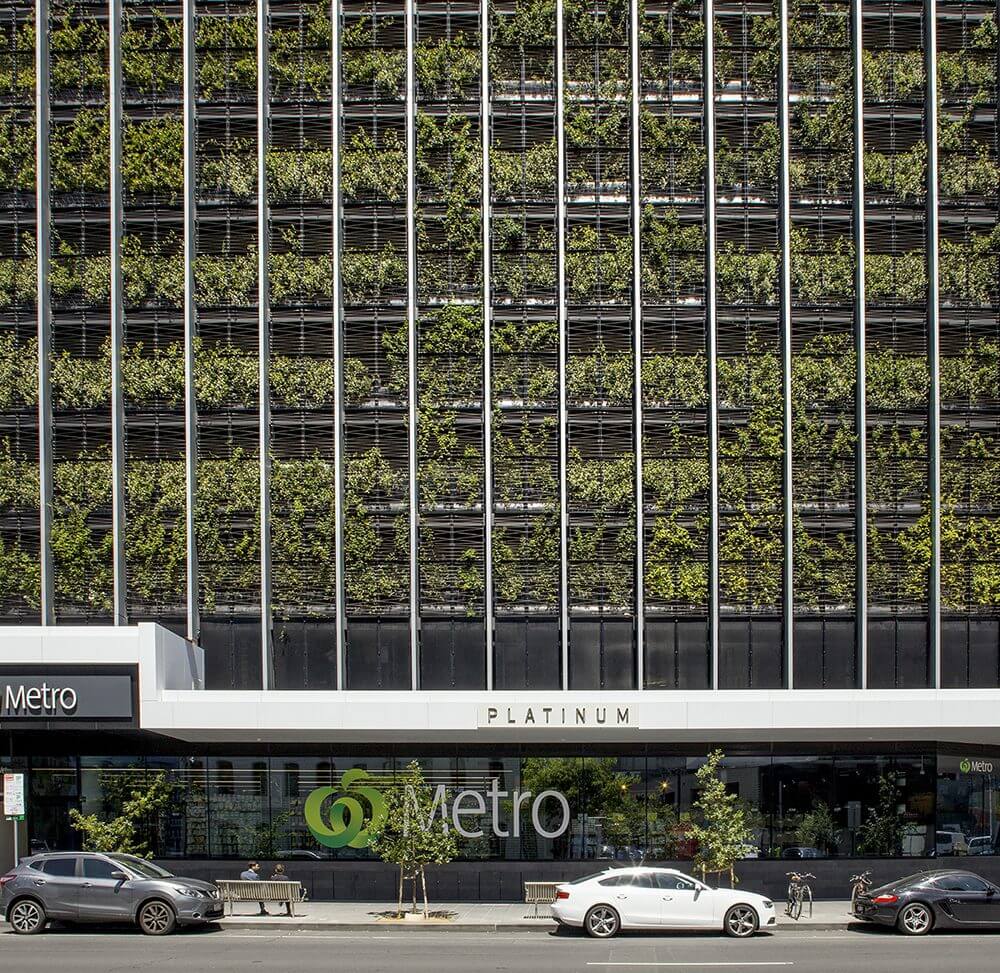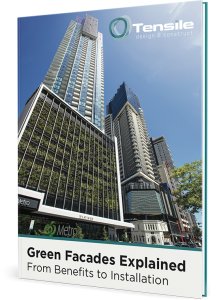Ecological tensile systems can help boost sustainability and support species diversity, helping create thriving urban ecosystems.
Here’s why this is important and how green tensile structures such as green barriers, walls and facades contribute.
Why biodiversity matters
Biodiversity helps create the ecosystems that we need for things like clean air and water, healthy soils and food production.
For example, pollinators such as birds and insects are essential in many of the crops we grow, while invertebrates are crucial for healthy soils. At the same time, trees and other plants absorb carbon dioxide and help prevent floods and protect the soil.
Without diversity of species, our food security and health are at risk. According to the World Health Organisation, threats to biodiversity come largely from deforestation, loss of habitat and climate change.
The role of ecological tensile systems
Ecological tensile systems can contribute to sustainability and help prevent the loss of biodiversity in urban environments.
Here’s how.
Plant selection
We tend to think of plants as providing shade and comfort and being visually pleasing – and that’s certainly the case with green walls and facades!
But vertical gardens or green walls can also be planted in such a way to attract specific bird species. This might include plants that attract insects for the birds to feed on or that provide food sources such as nectar or seeds.
Plant selection could also include species specifically designed to attract bees for pollination.
The plants used in green infrastructure projects also contribute to cleaner air and cooler temperatures in the local environment.
Materials, installation techniques and maintenance
The materials used to create green infrastructure can contribute towards greater sustainability and resource saving.
This is one reason (among many others) we use Jakob stainless steel wire rope cables and Webnet mesh.
These materials are made from a minimum of 70% recycled content in facilities operating on solar power, and they can be recycled again after use.
The marine-grade stainless steel is very durable, reducing waste and the risk of premature replacement. Support structures made from these products generally require very little ongoing maintenance, saving on resources, although of course the plants will need regular care!
Using robust yet lightweight Webnet and doing a lot of the work off-site also substantially reduces installation time and the volume of material needed.

Green infrastructure in action
We use these materials and methods in all our green infrastructure projects, including:
- Platinum Tower, Melbourne – this eight-level green facade went up in a matter of weeks due to a lot of the work being done off-site. We partnered with green infrastructure specialist Fytogreen to develop a system with 50% climbing plant coverage from the outset.
- St Kilda Park Primary, Melbourne – we installed a safety barrier at this school that doubles as a trellis for climbing plants. The result is a full-height green barrier that provides shade, reduces solar entry into the building and produces a cooling effect. The installation method we used also helped reduce materials, labour resources and costs.
- Stonnington Council offices, Melbourne – the climbing plant barriers inside this building absorb volatile compounds and carbon emissions, in turn providing cleaner and cooler air. In the process, this helps to improve both staff wellbeing and energy efficiency.
Call us today to discover more about ecological tensile systems or to talk about a project!






































